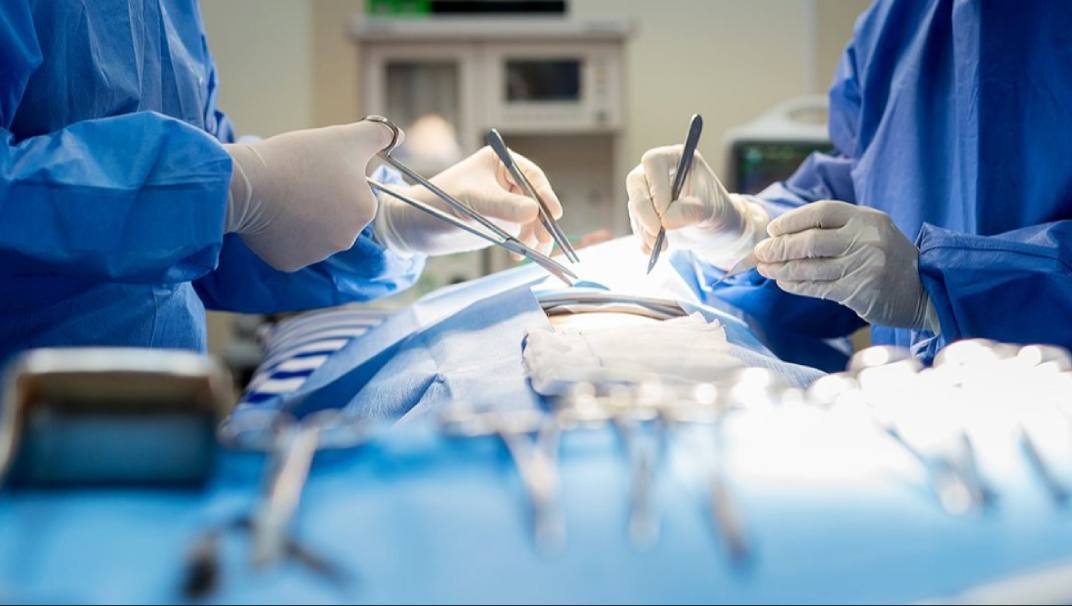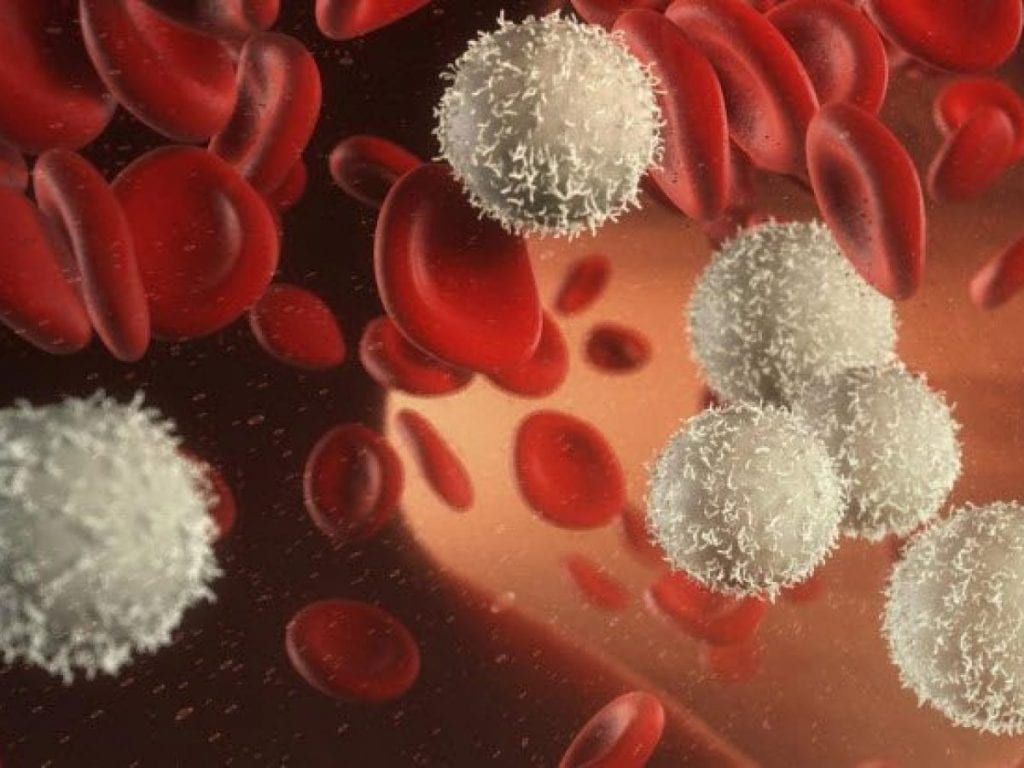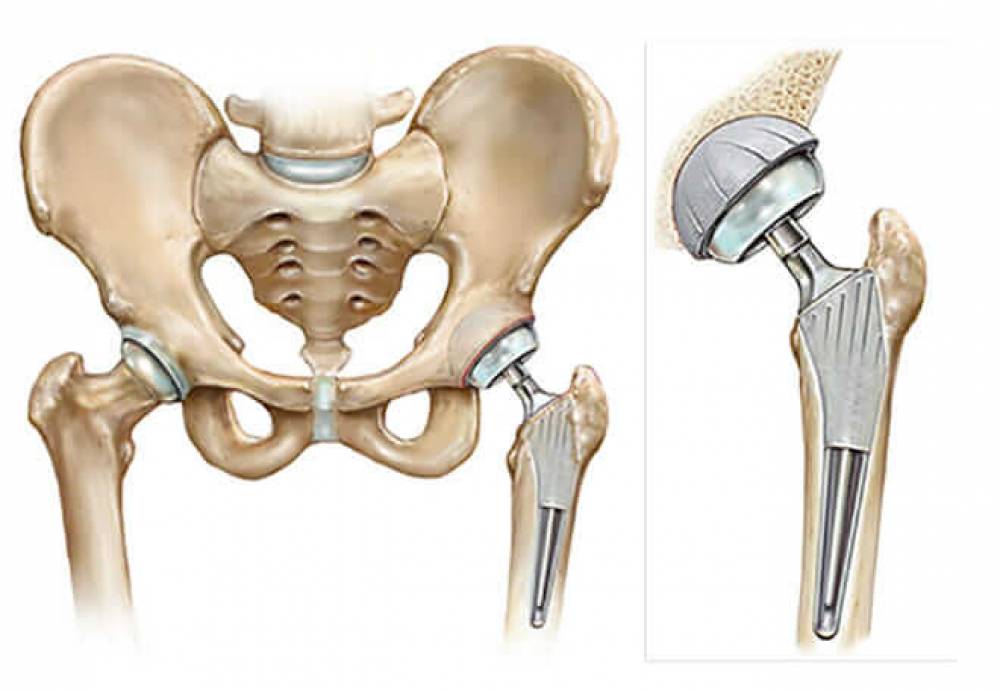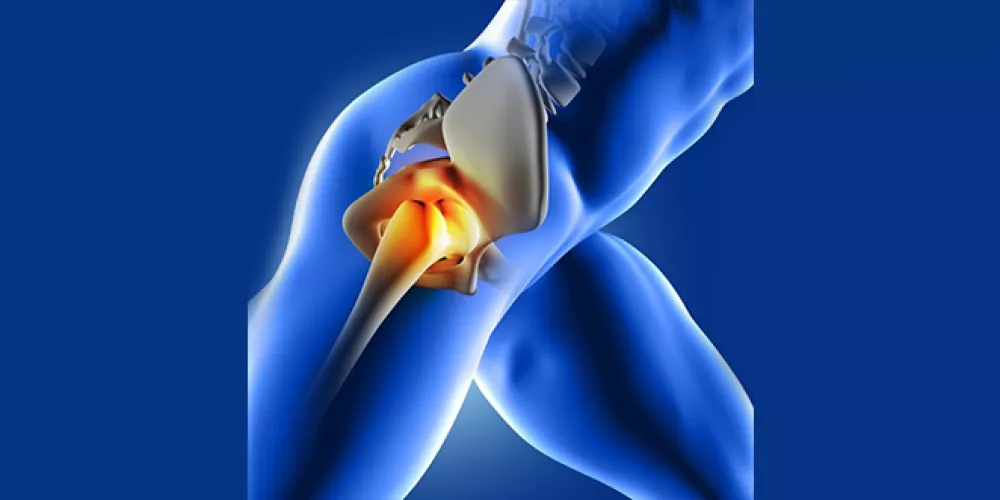What Is Bone Marrow Transplantation, and What Are Its Types?
أخر تحديث :
What Is Bone Marrow Transplantation? Don’t let pain hinder your life! Dr. Amr Amal, a specialist in bone marrow transplantation, is dedicated to improving your quality of life. In the following article, you can learn more about important medical information related to bone marrow transplantation, the recovery process, and whether there are alternative procedures or treatments that can replace it. Stay with us to get all the details.

What Are the Indications for Bone Marrow Transplantation?
Bone marrow transplantation is a procedure used to treat various diseases, such as lymphoma and leukemia. The body is prepared before the procedure by taking specific medications and undergoing several chemotherapy sessions.
Certain individuals are in greater need of bone marrow transplantation, including:
- Individuals with blood cancers such as leukemia and lymphoma.
- Those with genetic immune disorders like sickle cell anemia.
- Individuals with bone marrow disorders like aplastic anemia.
- Patients who have undergone chemotherapy.
“Dr. Amr Amal provides you with the most challenging surgical procedures with skill and professionalism, ensuring a quality of life like no other afterward.”
Types of Bone Marrow Transplantation
While the procedure of bone marrow transplantation itself remains the same, the difference lies in the source from which stem cells are obtained and injected into the patient’s body. There are several types of bone marrow transplantation:
- Autologous Transplantation (Type 1): In this type, stem cells are taken from the patient’s own body. The cells are collected, purified, and the healthy ones are reintroduced into the patient.
- Allogeneic Transplantation (Type 2): Allogeneic transplantation involves taking stem cells from a family member, usually a sibling, who is the closest genetic match to the patient. These cells are then injected into the patient.
- Haploidentical Transplantation (Type 3): This type is typically the last resort to obtain suitable stem cells for the patient. It involves a donation from a partially matched donor, usually a family member. Several tests are performed to ensure compatibility between the donor and recipient.
In conclusion, bone marrow transplantation is a vital procedure used to treat various diseases, especially those affecting the blood and immune system. The type of transplantation depends on the source of the stem cells, whether they are obtained from the patient, a family member, or a partially matched donor. Consultation with a medical professional is crucial to determine the most suitable treatment plan for each individual’s condition.

Preparations Before Bone Marrow Transplantation
Patients undergo preparations before bone marrow transplantation to ready the body for receiving new cells introduced through the transplantation process. These preparations include the following:
- The treating physician performs necessary tests to improve the patient’s condition.
- Based on the analysis results, the suitable donor is identified, or stem cells are collected from the patient themself.
- Stem cells are collected and preserved before transplantation.
- Before the procedure, the patient undergoes radiation therapy, chemotherapy, or a combination of both to eliminate diseased cells and reduce immunity to prevent the new stem cells from being attacked.
- The patient typically stays around 7 to 14 days before surgery to prepare adequately.
What Is Bone Marrow Transplantation?
Bone marrow transplantation is a therapeutic procedure that involves supplying the body with new and healthy stem cells to aid in the formation of various blood cells. This helps boost the patient’s immune system and treats specific diseases, especially tumors, blood disorders, and autoimmune conditions.
The bone marrow transplant procedure consists of several specific steps, including:
- Preparing a dedicated, isolated room in the hospital for the patient to minimize the risk of contamination due to the patient’s weakened immune system during this period.
- Transplanting bone marrow involves procedures similar to blood transfusion, where a specialist injects the patient with new stem cells.
- The bone marrow transplant process takes place over several sessions, usually spanning from 3 to 6 months, depending on the patient’s condition and the disease.
- All sessions are closely monitored by medical professionals to prevent complications, including low blood pressure.
- The patient is also intravenously administered with medications and nutrients to reduce the risk of infection, enhance the growth of stem cells, and support spinal cord and marrow recovery.
After bone marrow transplantation, the patient’s immunity gradually improves until full recovery is achieved.

How is Bone Marrow and Stem Cell Injection Done?
Bone marrow transplantation is essentially injecting the patient’s body with new stem cells to facilitate the formation of blood cells and improve the patient’s condition over time while continuously boosting their immunity. The injection is administered in an isolated room to reduce the risk of infection for the patient, and the stem cells are introduced through multiple injection sessions.
Post-Spinal Cord Marrow Transplantation Instructions
There are several instructions that should be known after undergoing a spinal cord marrow transplant, including:
- The patient remains in the hospital for a period to undergo necessary tests and blood analyses that determine the body’s response to the new cells and the initiation of proper blood cell formation.
- Specific medications prescribed by the attending physician should be taken, which help reduce complications of the procedure, such as nausea, diarrhea, and provide protection against some diseases that the person may be susceptible to due to weakened immunity.
- In case of increased post-surgery complications, the patient should return to the hospital and stay there for several days until the post-surgery symptoms are under control.
- In some cases, the patient may require blood and platelet transfusions to support the body until new blood cells begin to form.
- Attention should be given to a healthy diet that includes balanced nutrients, with a focus on reducing salt and alcohol intake.
- The recovery period after spinal cord marrow transplantation can vary from person to person, depending on the disease that affected them and their health condition before surgery. Therefore, the patient can regain their good health status after a period following the procedure. To find the best doctor for spinal cord marrow transplantation in Egypt, read the following article.
“To achieve full recovery after a spinal cord marrow transplantation, you need to follow all the directions and instructions of Dr. Amr Amal.”

What is the Success Rate of Bone Marrow Transplantation?
The success rate of bone marrow transplantation depends on various factors, including the skill and experience of the doctor performing the transplant, as well as adherence to pre-surgery instructions. In general, the success rate of bone marrow transplantation is approximately 70%, and it can be higher in certain cases, especially for children and teenagers.
Seeking a specialized doctor in such medical procedures helps improve the patient’s condition and increases the chances of recovery. If you are in need of a dedicated specialist in bone marrow transplantation, you can contact Dr. Amr Amal, who provides specialized medical consultation and comprehensive solutions for your bone marrow transplantation-related medical issues.
What are the Risks of Bone Marrow Transplantation?
Bone marrow transplantation carries some risks and complications that the patient may occasionally be exposed to after the procedure. In most cases, there is improvement over time. Some of the risks associated with bone marrow transplantation include:
- Severe and continuous bleeding.
- Kidney and liver problems.
- Numbness in the arms.
- Cataracts.
- Skin rash.
- Nausea and diarrhea for a period after the transplant.
“For more information about the cost of bone marrow transplantation for children in Egypt, you definitely need to read the following article.”

How much does Bone Marrow Transplantation cost in Egypt?
Bone marrow transplantation in Egypt has witnessed significant advancements in recent years, resulting in substantial improvements in patients’ conditions post-surgery. The specific cost of the procedure can vary based on several factors, including the type of transplantation, pre-operative and post-operative procedures, and more. The cost of this procedure can range from 300,000 to 350,000 Egyptian pounds or more.
Does the patient recover after Bone Marrow Transplantation?
Yes, patients can achieve recovery after bone marrow transplantation, with a success rate of up to 70%. This success rate can be further improved by adhering to regular follow-up appointments with the doctor and following the prescribed medications during the recovery period. The skill of the doctor also plays a crucial role in ensuring a successful bone marrow transplantation.
How to Donate Bone Marrow
Bone marrow donation is typically done by extracting stem cells from the donor, often from the hip bones, using a specialized needle and a machine similar to a kidney dialysis machine. Through this process, a small portion of the donor’s stem cells is taken, and the rest is returned to the donor’s body.
What is the difference between bone marrow transplantation and stem cell transplantation?
The difference between bone marrow transplantation and stem cell transplantation lies in the following:
Stem Cells: These are a type of cells that hold significant importance in the body. They can be thought of as raw material that can develop into various other specialized cells in the body, including red blood cells, white blood cells, and plasma.
Bone Marrow Transplantation: It is a medical procedure used to treat specific diseases such as tumors, immune deficiencies, and blood disorders. During the procedure, stem cells (precursor cells) are used and infused into the patient’s body, helping improve the patient’s immune system and treat the disease.
How long does a bone marrow transplant take?
The duration of a bone marrow transplantation procedure depends on several factors, including the type of transplant, the patient’s condition, and overall, the procedure can take approximately 1 to 4 hours. Here are some factors that can affect the length of the procedure:
Type of transplant: Whether it’s an autologous bone marrow transplant (using the patient’s bone marrow) or an allogeneic bone marrow transplant (using donor bone marrow) can require additional time for preparations and coordination of the donation process.
Patient’s health status: If the patient has other health issues, additional time may be needed for preparation and to ensure the patient’s safety during the procedure.
Preparations before the transplant: Pre-transplant evaluations, health assessments, bone marrow preparation, and coordination of the transplant process can take time.
Surgeon and medical team: The skill and experience of the surgeon and medical team can also impact the duration of the procedure.
In any case, according to many doctors and specialists in this field, after the procedure, the patient may need a recovery period ranging from several weeks to several months, depending on their overall health and how they respond to the surgery and the subsequent recovery phase.
When does a patient need a bone marrow transplant?
A bone marrow transplant is a surgical procedure in which healthy bone marrow tissue is transplanted into the patient’s hip bone. This procedure is typically used in severe cases that require the reconstitution of blood tissue in the body. Some of the conditions that may necessitate a bone marrow transplant include:
- Malignant blood diseases such as leukemia (blood cancer), which may require a bone marrow transplant to replace the affected marrow with healthy marrow.
- Inherited marrow disorders such as sickle cell anemia and severe congenital anemia.
- Marrow damage due to radiation therapy or chemotherapy used to treat certain types of cancer.
- Autoimmune diseases that affect the bone marrow.
- Some rare genetic diseases that affect the marrow.
However, the need for a bone marrow transplant is determined based on a detailed medical evaluation of the patient’s condition and health needs. It is always essential to consult a specialized doctor to determine whether a bone marrow transplant is suitable for the individual patient’s case and when it should be performed.

When does a doctor resort to bone marrow transplantation?
Bone marrow transplantation is considered a surgical procedure that doctors turn to in specific severe cases where there is damage or dysfunction in the bone marrow that necessitates the procedure. Here are some cases in which a doctor may resort to bone marrow transplantation:
- Malignant blood diseases.
- Bone marrow loss due to radiation therapy or chemotherapy.
- Inherited marrow disorders.
- Autoimmune diseases affecting the bone marrow.
- Other rare conditions.
It is important to note that the patient’s need for a bone marrow transplant is determined based on a comprehensive assessment of their health condition and medical history. The decision is made based on best medical practices and recommendations from the treating medical team. Therefore, it is crucial for the patient to consult their treating physician for an accurate assessment and consultation regarding available options.
When does a bone marrow transplant patient recover?
The recovery period after a bone marrow transplant depends on several different factors, including the patient’s condition, the type of transplant, donor compatibility, the transplant procedure itself, and other distinctive and significant factors that can vary from one case to another.
Generally, recovery after a bone marrow transplant can take several weeks to several months. Patients must carefully follow their treating doctor’s instructions, adhere to prescribed treatments, and maintain regular communication with the medical team to ensure the best possible recovery outcomes from the procedure.
Alternative to Bone Marrow Transplant
In addition to bone marrow transplantation, there are some alternatives to consider depending on the patient’s condition and the type of marrow-related problem they are facing. These alternatives include:
- Medication-based treatment: In some cases, drug therapy can be used to treat bone marrow issues instead of transplantation. For example, in certain autoimmune diseases that attack the marrow, immunosuppressive medications can be used to control damage.
- Radiation therapy: In certain cancer-related conditions, radiation therapy can be used to control tumors and reduce marrow damage.
- Other treatments: There may be other treatments such as biological therapy or gene therapies that target specific marrow problems.
- Symptom management: In cases where the problem cannot be completely cured, symptom management can be used to reduce the adverse effects on the patient’s quality of life, including supportive and pain management therapies.
It is always essential to consult the treating physician for advice and recommendations tailored to the patient’s individual case. Treatment depends on a precise assessment of the condition, medical history, and the patient’s specific needs, with each case being unique.
“Get a specialized consultation about the required procedure for your condition with the medical team of Dr. Amr Amal.”







